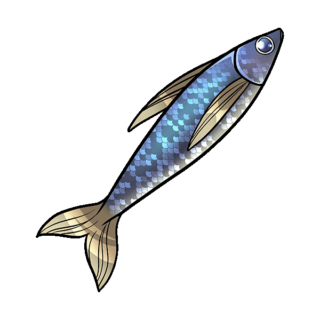Iwashi
While people often flock to more revered — i.e., bigger and subsequently with more easily-destabilized populations — fish like salmon, tuna, and swordfish, smaller fish lower on the food chain are often overlooked other than as a “cheap” option. The truth is that both due to our own global eating habits and the natural process of energy being lost as you go higher in each stage of the food chain, these little fish ought to be more important in our own diets.
Luckily, eating iwashi isn’t exactly a “sacrifice” we have to make for the ecosystem — on the contrary: Iwashi are extremely tasty and can be eaten in a handful of different interesting ways depending on your mood and the season.
Traditionally in Japan iwashi were marinated in salt and/or vinegar to keep them from spoiling. This is because sardines can go bad and break down quite quickly. With modern transportation and refrigeration though, some sushi restaurants now will serve it raw as nigiri.
Making your own marinated iwashi is super easy. The hardest part as you could probably guess is just handling the sardine since they’re pretty small and more delicate than larger fish. After that though, it just takes a quick salt cure of 20-30 minutes depending on the size. Once that’s over, wash off the dry salt brine and you’re good to go!
The size of iwashi differs depending on the season; they’re in season from about late summer through fall and get bigger and fattier as this season goes on. Later in the season, iwashi are at their best for grilling, when the extra fat helps keep it rich even as it gets cooked and crispier.
As we think of seafood, iwashi are extremely high in heart healthy good fats like omega three, as well as protein and even calcium — especially because smaller sardines have rib bones that are tiny and edible, it’s free extra calcium!
You can find iwashi in Uwajimaya’s seafood department along with canned and seasoned iwashi in our grocery aisles.





